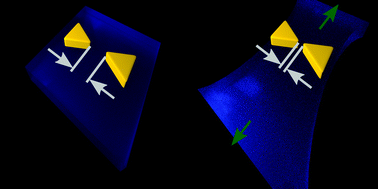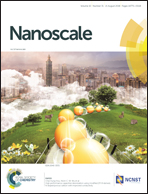Continuous reversible tuning of the gap size and plasmonic coupling of bow tie nanoantennas on flexible substrates
Abstract
As a multifunctional device for sensing experiments and fundamental research, tailor-made plasmonic nanostructures with continuously tunable resonances are created by preparing bow tie-shaped nanostructures on a flexible substrate. The bow ties are fabricated by electron beam lithography on a chromium sacrificial layer and transferred to a polydimethylsiloxane (PDMS) substrate. The structures on PDMS are analyzed by reflection dark-field spectroscopy and scanning electron microscopy. Dark-field spectra of individual nano-antennas are obtained while the substrate is relaxed, and while strain is applied and the substrate is elastically stretched. Depending on the alignment of the bow ties relative to the direction of the strain, the deformation of the substrates leads to an increase or decrease of the nanostructure gaps, and therefore to a fully reversible decrease or increase of the antenna coupling, respectively. The continuous change in coupling is visible as a blue-shift in the resonance of the coupling mode for increasing gap widths, and a red-shift for decreasing gap widths. This configuration offers interesting perspectives for molecular transport and sensing investigations under variable coupling conditions as well as for tunable SERS substrates and optical strain sensor applications. In particular, very narrow gaps are within reach in the transversal configuration.



 Please wait while we load your content...
Please wait while we load your content...